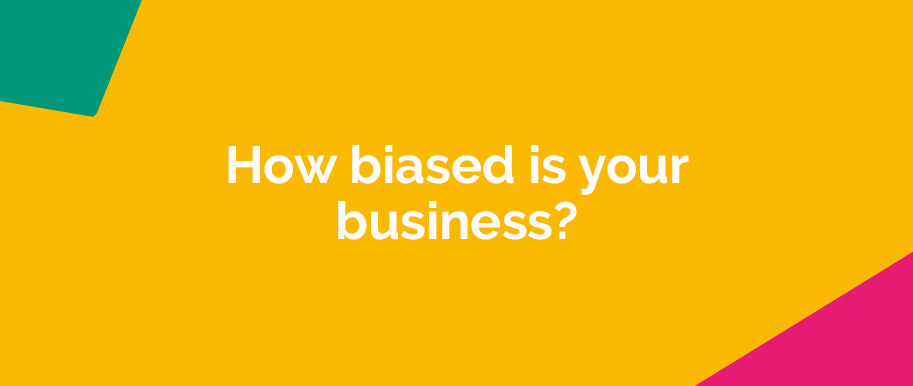Bias is a significant element of what makes us human and put simply it can be considered as individual preference and the manner in which we navigate our daily existence. Our biases operate at cognitive, emotional, relational and behavioural level and resonate with our values, beliefs and identity. Whilst bias can offer speed, efficiency and competence to our working practices, take away our positive bias and we are potentially vulnerable, exert our negative bias and our potential is to exclude and appear prejudiced.
Bias is a feature of our daily lives helping us to access short cuts for most everything we think, feel and do; without bias we would be a fairly crude business proposition as we would need to rationalise every thought or action rather than drawing on our experience, knowledge and well-established heuristics. Bias can work as a positive or negative feature helping us to confirm our preferences, values and beliefs; it is our short-hand for achieving familiarity, comfort, ease and security. The positive benefits of bias offer speed, efficiency and inclusion; on the negative side bias can generate exclusion, narrow mindedness and rigidity.
Conscious bias is something that we can articulate and deliver with rationale; consciously I can tell you what my bias is and why I have it and if I think it might be received as prejudicial I can make it palatable by adding a degree of political correctness. Unconscious bias is when we have either lost sight of the rationale or the process through which our biases manifest. Unconscious bias is demonstrated implicitly through emotion, communication, behaviour and relationships. The challenge for both individuals and businesses is to become aware of which biases are constructive and generative and which are not.
Business and bias often have an arms-length relationship as bias tends not to fit into traditional learning and development strategies. Attempting to eliminate negative unconscious bias by simply identifying it can create a knee-jerk reaction as it can appear more as an indictment rather than progression. Helping people to recognise their unconscious biases and embark on a programme of change requires a supportive and developmental environment that has to be relevant to each individual. Bias is learned and therefore has a structure which means it can be reconsidered, relearned or dismissed; the critical factor in tackling negative bias is in understanding how it supports the individual who owns it.
